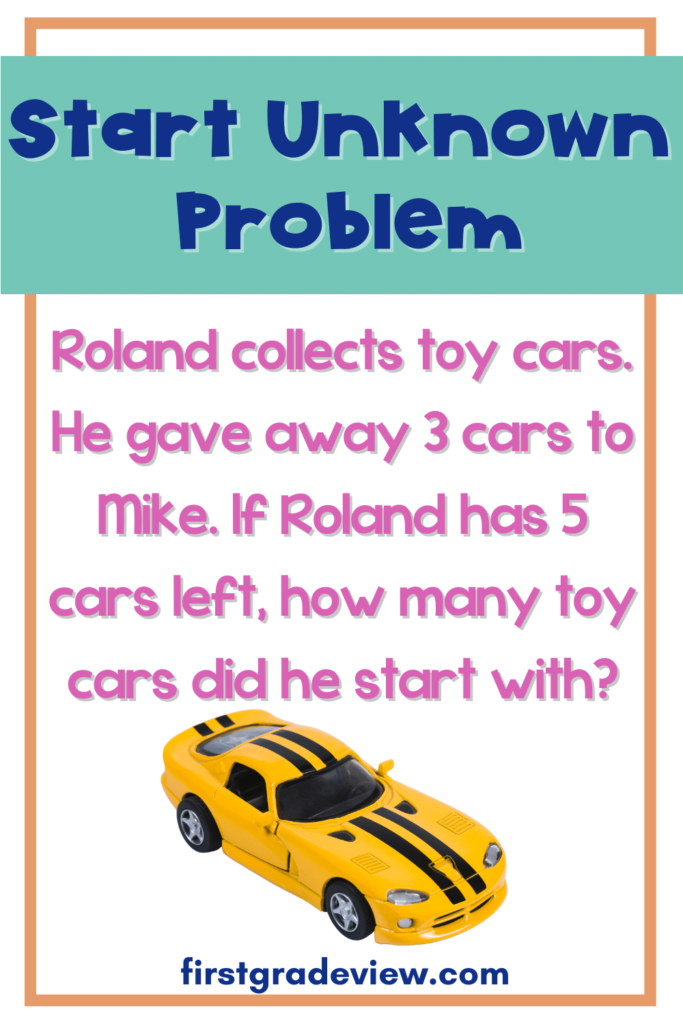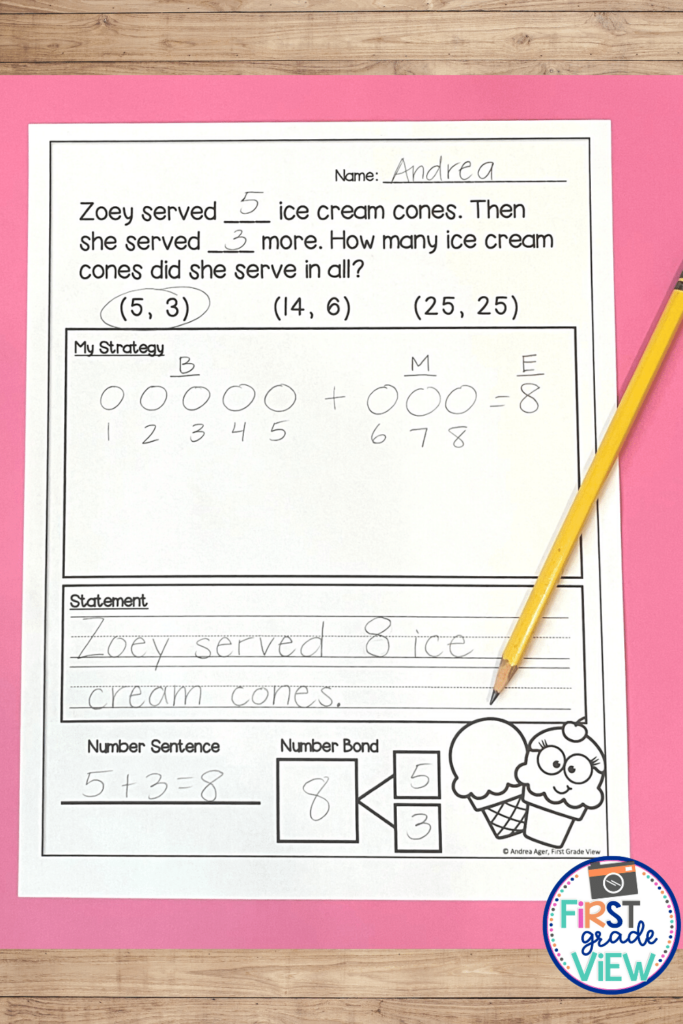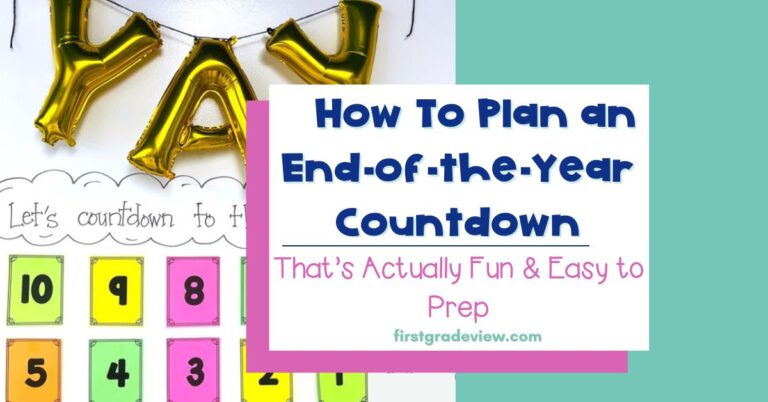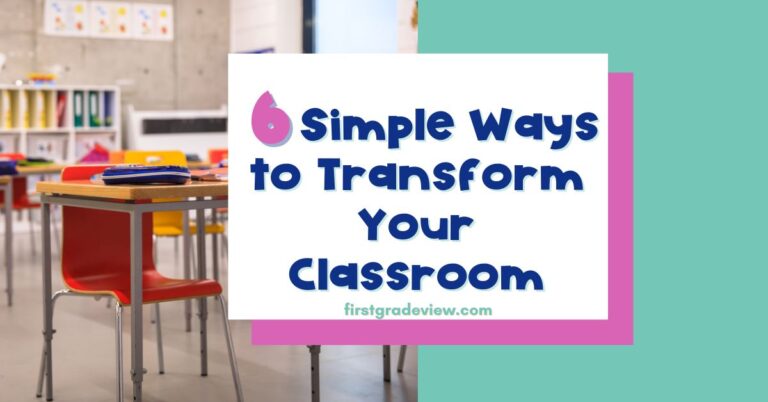When I think back to the beginning of my teacher career, I cringe at a few of the things I used in my classroom. I’m sure we have all been there at some point. I remember the time I thought having a hot pink, lime, and zebra print room would be the cutest thing ever! Or when I thought using a clip chart would be beneficial for all my students. Eventually, I changed my mind. I now choose decor that serves a purpose and a behavior management system that makes my students feel proud and empowered. In math especially, there have been many things I have changed over the years. One thing that I no longer use is a chart with keywords for math story problems. I no longer feel having a keyword poster is the best tool when helping students understand word problems.

After getting CGI (Cognitively Guided Instruction) training and learning about types of story problems, I realized that teaching students to look for certain math keywords when it came to story problems wasn’t the best option. When it comes to word problems, the main goal should always be to have students make sense of the problem. In fact, making sense of problems is the first of one of the 8 Standards for Mathematical Practices. When we teach students to rely on keywords, we skip this vital practice of making sense of word problems.

Keywords for Math Story Problems Can Be Misleading
Although teaching math keywords can seem helpful and are part of the content vocabulary students will encounter, they can also be misleading. For example, students be under the impression that the phrase “gave away” means they should subtract to solve the story problem. However, notice how it can mislead students in the following problem:
Roland collects toy cars. He gave away 3 cars to Mike. If Roland has 5 cars left, how many toy cars did he start with?
In this word problem, students are given the parts and must solve for the whole. When students are taught to look for keywords, they will see the phrase “gave away” and think they should use subtraction. However, in this case, they would get the wrong answer. Not only that, their total, or number of cars Roland started with would be less than all the other numbers in the story. This would not make sense! That’s why it’s not only important to make sense of the problem, but students must also check that their answer is reasonable.

Some Word Problems Can Be Solved Using More Than One Operation
Other times, keywords can be misleading because students may be able to solve a problem using different operations. Take the following problems for example:
Jenny has 14 flowers. Ana has 11 flowers. How many more flowers does Jenny have than Ana?
Jenny has 14 flowers. Ana has 11 flowers. How many less flowers does Ana have than Jenny?
Comparing problems like this can be solved using either addition or subtraction regardless of which keywords are used. For example, students can solve by subtracting 14-11= 3 more/less flowers. They can also use addition by starting at 11 and counting on 3 more to solve 11+?=14. If we want our students to be flexible math thinkers, we want to encourage them to use the strategy that makes the most sense to them. In order to do this, we need to encourage students to focus on understanding the problem versus looking for keywords.

What If There Are No Keywords?
One of the biggest limitations of teaching keywords is that not all word problems have them. When we teach students to look for keywords, they can be thrown off when the problem doesn’t have any. In this case, students may be unsure of what strategy to use. Take the following word problem for example:
There are 15 pencils in the box. Seven are red, and the rest green. How many pencils are green?
This type of word problem can be tricky for students who are looking for keywords because they won’t find any. When students rely on keywords, they may not know what operation to use when there aren’t any keywords in the problem.
Keywords For Math Story Problems Don’t Work For Multi-Step Problems
Once students get to second grade, they begin to solve multi-step math problems. In these problems, students may have to use different operations to solve. This is when reading for meaning is even more important. Even though K-1 students may not be solving multi-step problems, as teachers, we want to provide a solid foundation and routine of making sense of problems.

Teach Key Concepts Not Keywords for Math Story Problems
So if teaching keywords for math story problems isn’t the best option, what should teachers do instead? Remember, the main goal should be for students to make sense of the problem. Here are some instructional strategies on how you can do this:
Teach Key Concepts of Operations
Instead of focusing on keywords, focus on operation situations. Ask students to identify the math situation. For example, is this a joining (adding) or separating (subtracting) example? In this situation, do you know a part or the whole? Is this a situation where quantities are being compared? Is this an example of equal groups(multiplication) or sharing (division)? How do you know?
Act Out Story/ Identify Action/ Retell It In Own Words
Help students build understanding by acting out the problem. If there is no action, students can retell the problem in their own words.
Encourage the Use of a Graphic Organizer, Math Tools, or Visual Model
Allow students to choose a math tool such as ten frames, an open number, 120 chart, place value chart, or base ten blocks to help them solve the problem. Students should also be allowed to represent their thinking with a visual model such as drawing.
Identify What Is Missing in the Word Problem
Primary students work a lot on honing their retelling skills by including the beginning, middle, and end of a story. They can take this sequencing skill and apply it to word problems as well. In word problems that have an action, you can use a beginning (start), middle (change), and end (result) graphic organizer to help students identify what is missing to aid in their understanding. For example, Andrea has 4 red apples and gives 2 to Jenny. How many apples does Andrea have now? Students can retell the problems in terms of what happens first, next, and last. Then, they can translate this into an equation such as 4-2=?

Estimate a Reasonable Answer for Math Story Problems
In addition to making sense of the problem, students should also ask themselves if their answer is reasonable. To help them do this, you can ask questions such as, “Do you think the answer is going to be greater or less than the numbers you were given? Why do you think that?” or “What answer makes sense for this situation?”
Hopefully this post has helped you consider why teaching keywords for math story problems is the best instructional practice. I would love to hear about what other strategies you use to help students make sense of word problems. Comment below!
Source: Teaching Student-Centered Mathematics by Van de Walle, Lovin, Karp, & Bay-Williams
You may also like:
Making Sense by Tracy Zager




